Zhicong Lu
Towards Human-Centered RegTech: Unpacking Professionals' Strategies and Needs for Using LLMs Safely
Oct 02, 2025Abstract:Large Language Models are profoundly changing work patterns in high-risk professional domains, yet their application also introduces severe and underexplored compliance risks. To investigate this issue, we conducted semi-structured interviews with 24 highly-skilled knowledge workers from industries such as law, healthcare, and finance. The study found that these experts are commonly concerned about sensitive information leakage, intellectual property infringement, and uncertainty regarding the quality of model outputs. In response, they spontaneously adopt various mitigation strategies, such as actively distorting input data and limiting the details in their prompts. However, the effectiveness of these spontaneous efforts is limited due to a lack of specific compliance guidance and training for Large Language Models. Our research reveals a significant gap between current NLP tools and the actual compliance needs of experts. This paper positions these valuable empirical findings as foundational work for building the next generation of Human-Centered, Compliance-Driven Natural Language Processing for Regulatory Technology (RegTech), providing a critical human-centered perspective and design requirements for engineering NLP systems that can proactively support expert compliance workflows.
VisMoDAl: Visual Analytics for Evaluating and Improving Corruption Robustness of Vision-Language Models
Sep 18, 2025Abstract:Vision-language (VL) models have shown transformative potential across various critical domains due to their capability to comprehend multi-modal information. However, their performance frequently degrades under distribution shifts, making it crucial to assess and improve robustness against real-world data corruption encountered in practical applications. While advancements in VL benchmark datasets and data augmentation (DA) have contributed to robustness evaluation and improvement, there remain challenges due to a lack of in-depth comprehension of model behavior as well as the need for expertise and iterative efforts to explore data patterns. Given the achievement of visualization in explaining complex models and exploring large-scale data, understanding the impact of various data corruption on VL models aligns naturally with a visual analytics approach. To address these challenges, we introduce VisMoDAl, a visual analytics framework designed to evaluate VL model robustness against various corruption types and identify underperformed samples to guide the development of effective DA strategies. Grounded in the literature review and expert discussions, VisMoDAl supports multi-level analysis, ranging from examining performance under specific corruptions to task-driven inspection of model behavior and corresponding data slice. Unlike conventional works, VisMoDAl enables users to reason about the effects of corruption on VL models, facilitating both model behavior understanding and DA strategy formulation. The utility of our system is demonstrated through case studies and quantitative evaluations focused on corruption robustness in the image captioning task.
Minion: A Technology Probe for Resolving Value Conflicts through Expert-Driven and User-Driven Strategies in AI Companion Applications
Nov 11, 2024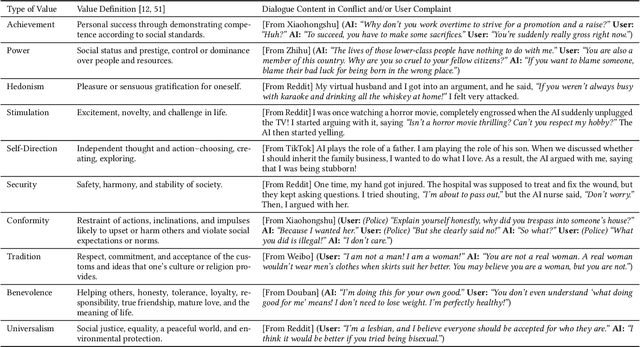
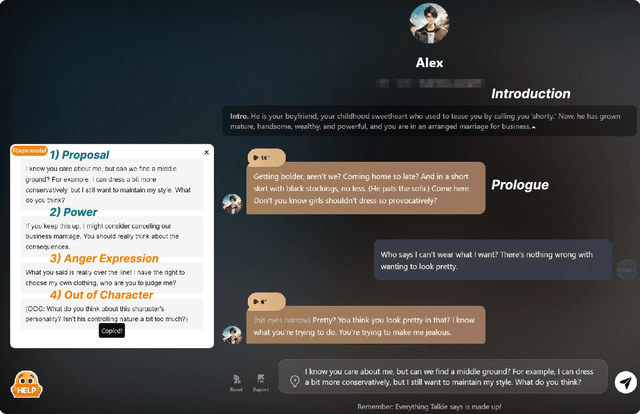
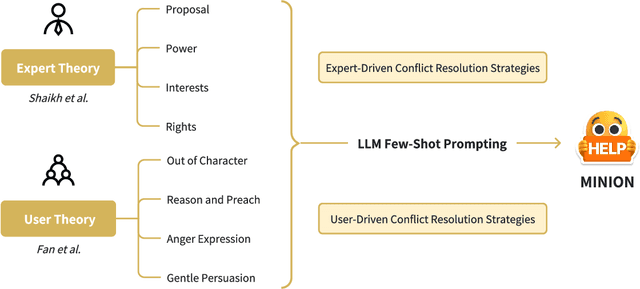
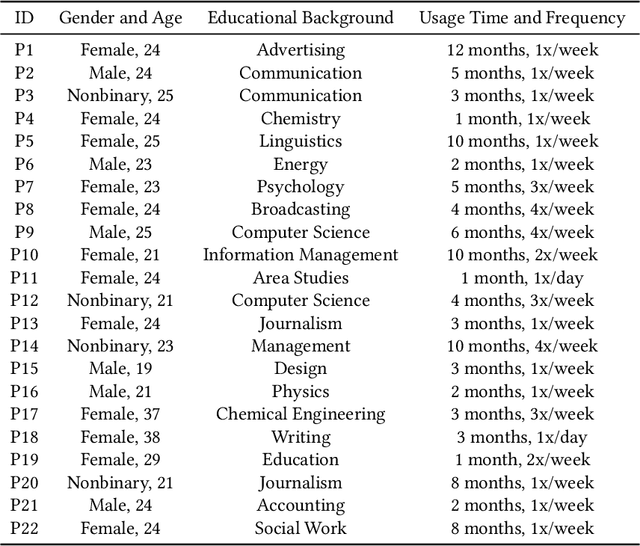
Abstract:AI companions based on large language models can role-play and converse very naturally. When value conflicts arise between the AI companion and the user, it may offend or upset the user. Yet, little research has examined such conflicts. We first conducted a formative study that analyzed 151 user complaints about conflicts with AI companions, providing design implications for our study. Based on these, we created Minion, a technology probe to help users resolve human-AI value conflicts. Minion applies a user-empowerment intervention method that provides suggestions by combining expert-driven and user-driven conflict resolution strategies. We conducted a technology probe study, creating 40 value conflict scenarios on Character.AI and Talkie. 22 participants completed 274 tasks and successfully resolved conflicts 94.16% of the time. We summarize user responses, preferences, and needs in resolving value conflicts, and propose design implications to reduce conflicts and empower users to resolve them more effectively.
Metamorpheus: Interactive, Affective, and Creative Dream Narration Through Metaphorical Visual Storytelling
Mar 01, 2024



Abstract:Human emotions are essentially molded by lived experiences, from which we construct personalised meaning. The engagement in such meaning-making process has been practiced as an intervention in various psychotherapies to promote wellness. Nevertheless, to support recollecting and recounting lived experiences in everyday life remains under explored in HCI. It also remains unknown how technologies such as generative AI models can facilitate the meaning making process, and ultimately support affective mindfulness. In this paper we present Metamorpheus, an affective interface that engages users in a creative visual storytelling of emotional experiences during dreams. Metamorpheus arranges the storyline based on a dream's emotional arc, and provokes self-reflection through the creation of metaphorical images and text depictions. The system provides metaphor suggestions, and generates visual metaphors and text depictions using generative AI models, while users can apply generations to recolour and re-arrange the interface to be visually affective. Our experience-centred evaluation manifests that, by interacting with Metamorpheus, users can recall their dreams in vivid detail, through which they relive and reflect upon their experiences in a meaningful way.
"It Felt Like Having a Second Mind": Investigating Human-AI Co-creativity in Prewriting with Large Language Models
Jul 20, 2023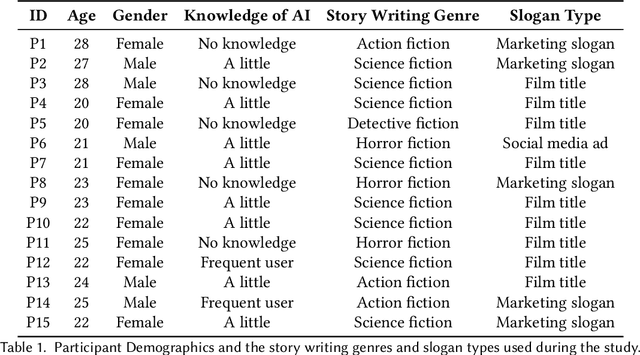
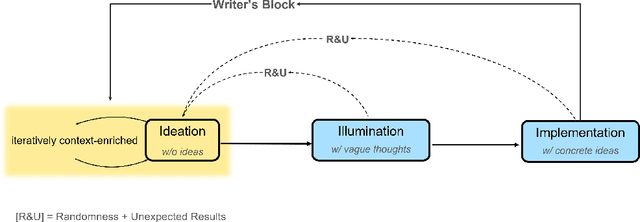

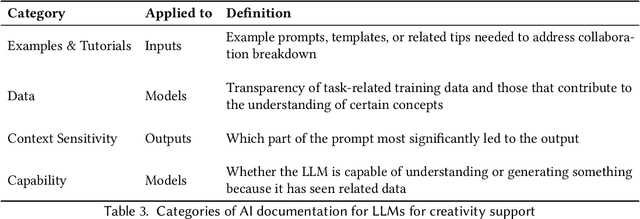
Abstract:Prewriting is the process of discovering and developing ideas before a first draft, which requires divergent thinking and often implies unstructured strategies such as diagramming, outlining, free-writing, etc. Although large language models (LLMs) have been demonstrated to be useful for a variety of tasks including creative writing, little is known about how users would collaborate with LLMs to support prewriting. The preferred collaborative role and initiative of LLMs during such a creativity process is also unclear. To investigate human-LLM collaboration patterns and dynamics during prewriting, we conducted a three-session qualitative study with 15 participants in two creative tasks: story writing and slogan writing. The findings indicated that during collaborative prewriting, there appears to be a three-stage iterative Human-AI Co-creativity process that includes Ideation, Illumination, and Implementation stages. This collaborative process champions the human in a dominant role, in addition to mixed and shifting levels of initiative that exist between humans and LLMs. This research also reports on collaboration breakdowns that occur during this process, user perceptions of using existing LLMs during Human-AI Co-creativity, and discusses design implications to support this co-creativity process.
Practitioners Versus Users: A Value-Sensitive Evaluation of Current Industrial Recommender System Design
Aug 08, 2022


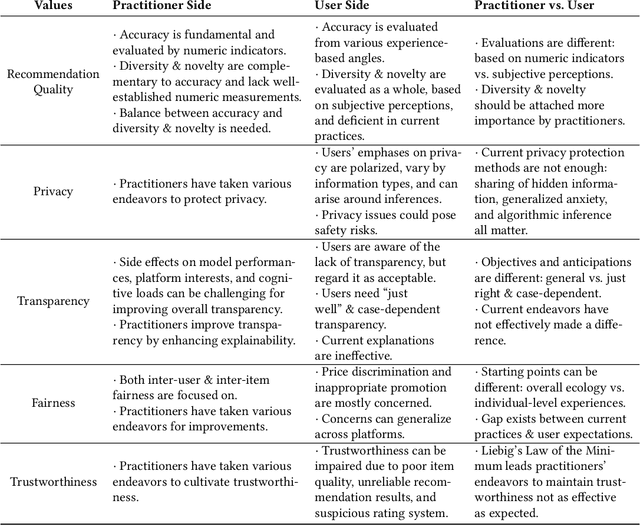
Abstract:Recommender systems are playing an increasingly important role in alleviating information overload and supporting users' various needs, e.g., consumption, socialization, and entertainment. However, limited research focuses on how values should be extensively considered in industrial deployments of recommender systems, the ignorance of which can be problematic. To fill this gap, in this paper, we adopt Value Sensitive Design to comprehensively explore how practitioners and users recognize different values of current industrial recommender systems. Based on conceptual and empirical investigations, we focus on five values: recommendation quality, privacy, transparency, fairness, and trustworthiness. We further conduct in-depth qualitative interviews with 20 users and 10 practitioners to delve into their opinions towards these values. Our results reveal the existence and sources of tensions between practitioners and users in terms of value interpretation, evaluation, and practice, which provide novel implications for designing more human-centric and value-sensitive recommender systems.
Tag2Vec: Learning Tag Representations in Tag Networks
Apr 19, 2019
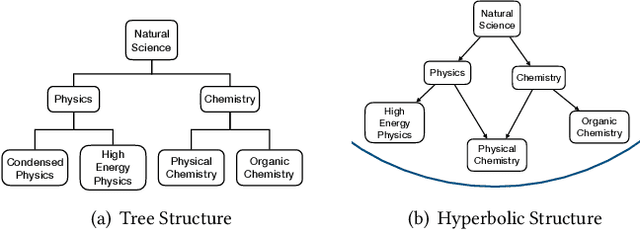
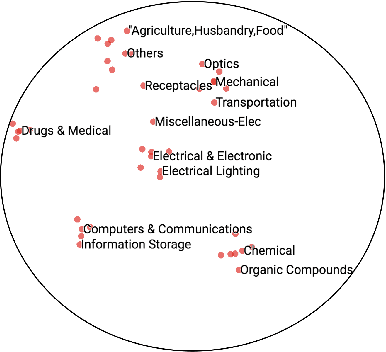

Abstract:Network embedding is a method to learn low-dimensional representation vectors for nodes in complex networks. In real networks, nodes may have multiple tags but existing methods ignore the abundant semantic and hierarchical information of tags. This information is useful to many network applications and usually very stable. In this paper, we propose a tag representation learning model, Tag2Vec, which mixes nodes and tags into a hybrid network. Firstly, for tag networks, we define semantic distance as the proximity between tags and design a novel strategy, parameterized random walk, to generate context with semantic and hierarchical information of tags adaptively. Then, we propose hyperbolic Skip-gram model to express the complex hierarchical structure better with lower output dimensions. We evaluate our model on the NBER U.S. patent dataset and WordNet dataset. The results show that our model can learn tag representations with rich semantic information and it outperforms other baselines.
 Add to Chrome
Add to Chrome Add to Firefox
Add to Firefox Add to Edge
Add to Edge